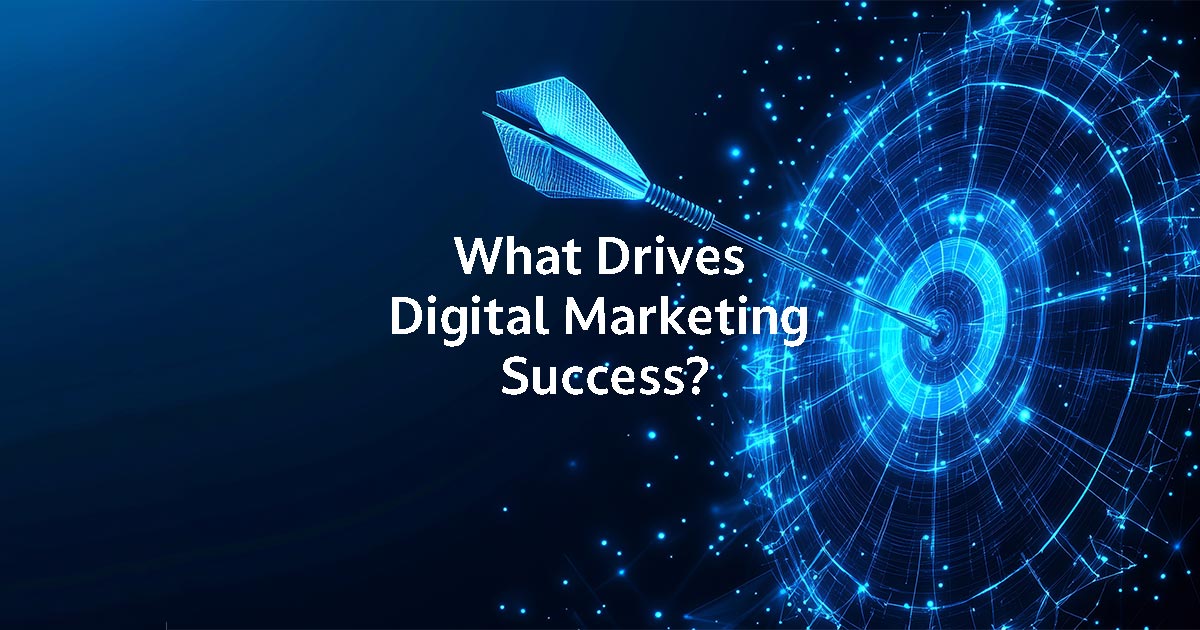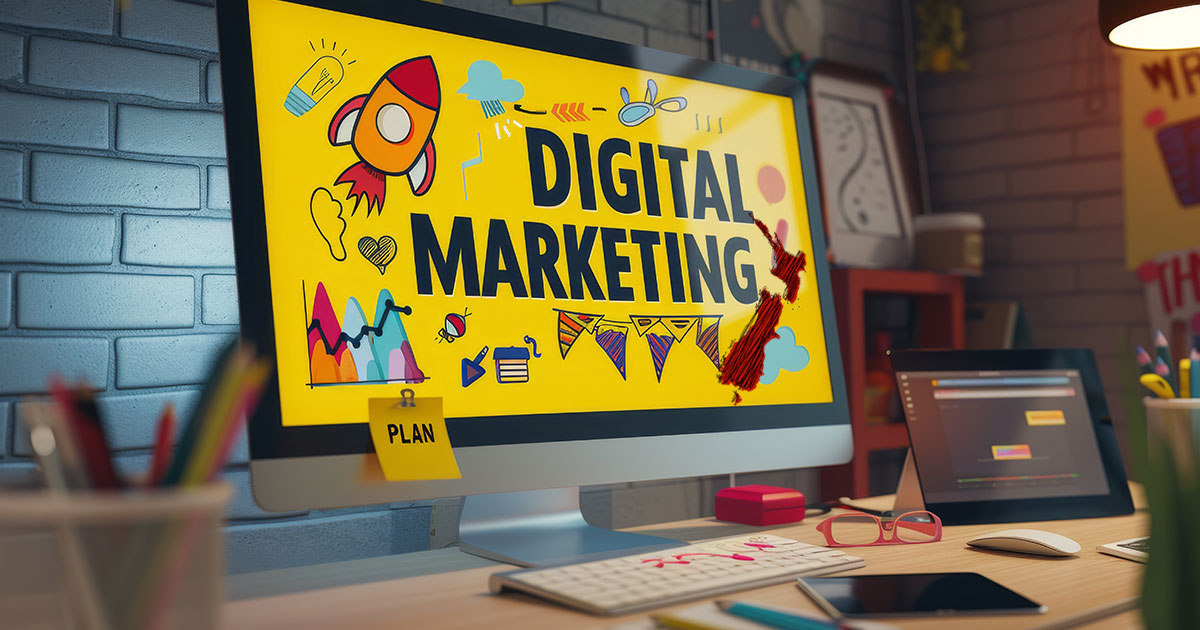I know digital experience probably sounds just like another vague tech buzzword. But it’s not. It’s actually the thing that makes or breaks whether someone sticks with your brand or forgets you even exist.
So, what is digital experience? It’s the sum of every single interaction someone has with your brand online.
- Your website.
- Your emails.
- Your app (if you have one).
- Your ads and other media channels (like social).
- Even how fast your site loads on mobile while someone’s standing in a queue.
When those experiences are smooth, helpful, and consistent, people come back. When they’re clunky or confusing, they bounce. Fast.
A great digital experience doesn’t happen by accident. It takes planning, empathy, and a willingness to evolve, which is exactly where Growth-Driven Design (GDD) comes in. Unlike traditional web design, GDD is built on iteration. It’s about launching quickly, learning fast, and constantly improving. Something that worked well last year, may not work now. So therefore you need to evolve and adapt…
If your digital experience isn’t helping your business grow, it’s costing you. Let’s fix that.
Understanding the Digital Experience Landscape
Digital experience goes way beyond just having a website. Although your website is the heart and soul of it. But, overall it’s the full ecosystem of how customers connect with your brand online. Every platform, every touchpoint, every scroll and swipe counts.
Today, people are jumping between devices and channels more than ever. Your job? Make sure that no matter how they interact with you—whether it’s a late-night scroll on Instagram or a product search on your site—the experience feels seamless.
That means understanding the user journey, spotting the friction points, and actively improving them. This is where GDD shines. You’re not guessing what works. You’re testing, learning, and evolving every step of the way.
Defining Digital Experience (Without the BS)
Digital experience is every touchpoint rolled into one cohesive journey. And it’s not just about being online. It’s about how your brand makes people feel during that journey.
It could be the ease of finding answers on your site. The tone in your emails. The speed of your checkout. All of these moments shape perception, trust, and loyalty.
When you get it right, users feel like your brand “gets them.” When you don’t, they feel like you don’t care.
A killer digital experience hits three goals: It meets expectations, aligns with your brand values, and evolves constantly. Again—hello, GDD… How you doo-in..?
Key Components of Digital Experience
To build a great digital experience, you need more than a pretty homepage. Here are the core building To build a great digital experience, you need more than a pretty homepage. You need a connected ecosystem—and it all starts with your website.
Website: This is the heart and soul of your digital presence. It’s the core hub that everything else plugs into. Your website isn’t just a digital brochure—it’s your 24/7 sales rep. It should guide users through clear conversion paths, capture leads, and answer their questions before they even ask. Smart landing pages, compelling calls to action, gated content, and contact funnels all play a role. Every page should have a purpose. Every click should bring users closer to a result. And if it’s not doing that? It’s time to optimise.
Mobile Apps: On-the-go functionality that keeps your brand in your customers’ pocket. Convenience is everything.
Social Media: This is where your brand personality shows up. It’s your chance to engage, entertain, and stay top of mind.
Email: One of the most underrated channels—if it’s personalised, timely, and relevant, it still packs a serious punch.
Content: From blogs and case studies to video and infographics, your content has to connect, educate, and deliver value.
With a Growth-Driven Design (GDD) mindset, none of these stay static. They’re tested, updated, and fine-tuned based on real user data. That’s how you stay relevant—and keep growing.
Why Digital Experience Matters More Than Ever
People don’t just judge your brand by your products anymore. They judge it by the experience.
A bad checkout flow? They’re gone. Slow website? You just lost a potential lead or a sale. Mixed messages across platforms? Out-of-date blog articles? Trust gone.
But get it right, and you’ll increase conversions, reduce churn, and build customer loyalty. GDD helps you do that by making your digital presence a living, breathing part of your business.
And let’s face it—if you’re not evolving your digital experience, you’re falling behind.
Customer Satisfaction = Growth
Want loyal customers? Give them a reason to stay.
When the digital experience is intuitive, fast, and enjoyable, people remember. They return. They buy again. And they tell their mates.
It doesn’t stop with functionality. Loyalty is driven by personalisation, consistency, and that feeling of “they made this for me.”
Consistency Builds Brand Trust
A strong brand isn’t built overnight—it’s built every time someone interacts with you.
When your site, socials, emails, and ads feel like they’re coming from the same place, you build trust. When things feel disjointed? That trust erodes.
GDD forces consistency. It encourages ongoing updates and alignment across all channels. And that builds confidence in your brand.
Designing Seamless Experiences (That Actually Work)
Beautiful design is great. But it needs to function, too.
A seamless digital experience is the sweet spot between visual appeal and usability. It’s easy to navigate. Fast. Clear. No dead ends. No unnecessary steps.
You achieve this with:
- User-first design
- Speed and responsiveness
- Iterative improvements based on user feedback
In other words, the GDD way.
Why UI/UX Isn’t Optional
UI = How it looks. UX = How it works.
They need each other. You can’t have one without the other. A slick interface with a frustrating user flow is a waste. So is a brilliant UX hidden behind a clunky layout.
User research, testing, and real feedback shape UI/UX that actually performs. And when that loop is baked into your process? You’re building a better experience every time.
Personalisation That Feels Human
Customers want to feel seen.
Whether it’s product recommendations, personalised emails, or tailored content—when done well, personalisation drives deeper engagement and loyalty.
But do it without being creepy. And always be transparent about how you use data. Trust matters.
GDD helps here too. You learn what works by watching how users behave, not by guessing.
Optimising Digital Experience = Business Growth
This isn’t just about better websites. It’s about measurable business outcomes.
Improving your digital experience drives real growth:
- Higher conversions
- Better retention
- More referrals
It starts with understanding the data, identifying friction points, and making smart changes. Then rinse and repeat. The more you optimise, the more value you create.
Data is Gold (If You Use It Right)
Analytics aren’t just nice to have—they’re essential.
From page views and heatmaps to conversion funnels and scroll depth, the data tells you where to double down and where to fix things. But you need to look at the right data, not just the vanity metrics.
And yes—handle user data with care. Secure it. Respect it. Make your privacy practices clear.
Speed, Performance & Accessibility Matter
Nobody has time for slow load times. Or buttons that don’t work. Or platforms that exclude users.
You need:
- Speed.
- Uptime.
- Accessibility baked in.
That means clean code, compressed images, alt text, keyboard-friendly navigation, and more.
Side note: Most of these are things that template systems like can’t offer. So Therefore you need, think carefully about what platform you build your website on, too. This is why we don’t work with Wix or build websites with Squarespace.
Optimising performance isn’t a “nice-to-have”. It’s non-negotiable.
Why Work With a Digital Experience Agency
Sometimes you need an outside perspective. A team that lives and breathes digital experience design. One that can see your blind spots and help you level up.
The right agency brings:
- Strategic thinking
- Design and tech expertise
- The ability to turn insight into action
And ideally? A Growth-Driven Design mindset.
Tech That’s Changing the Game
AI. Machine learning. VR. AR.
Emerging tech is opening up new ways to engage and personalise. AI can help tailor content and streamline interactions. VR and AR can create immersive brand moments.
But tech for tech’s sake is useless. Use what adds value to the experience—not just what looks flashy.
Measuring, Testing, Improving
Want to make your digital experience better? Measure it.
Track key metrics. Run A/B tests. Collect feedback. And don’t just gather data—act on it.
Continuous learning is key. That’s what GDD is all about: Build, learn, improve. Then repeat.
Final Thoughts: The Experience Is the Brand
Your digital experience is your brand. It’s what customers remember. It’s what drives growth.
In a world that keeps moving faster, the brands that invest in better digital experiences—and continuously improve them—are the ones that stay ahead.
And that starts with one question: What does your digital experience say about you?





